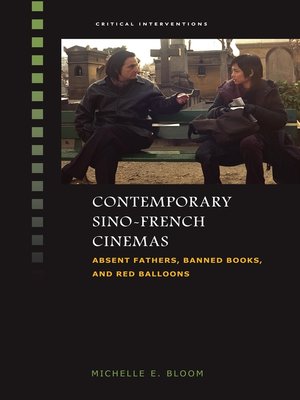Contemporary Sino-French Cinemas
ebook ∣ Absent Fathers, Banned Books, and Red Balloons · Critical Interventions
By Michelle E. Bloom

Sign up to save your library
With an OverDrive account, you can save your favorite libraries for at-a-glance information about availability. Find out more about OverDrive accounts.
Find this title in Libby, the library reading app by OverDrive.



Search for a digital library with this title
Title found at these libraries:
| Loading... |
Transnational cinemas are eclipsing national cinemas in the contemporary world, and Sino-French films exemplify this phenomenon through the cinematic coupling of the Sinophone and the Francophone, linking France not just with the Chinese mainland but also with the rest of the Chinese-speaking world. Sinophone directors most often reach out to French cinema by referencing and adapting it. They set their films in Paris and metropolitan France, cast French actors, and sometimes use French dialogue, even when the directors themselves don't understand it. They tend to view France as mysterious, sexy, and sophisticated, just as the French see China and Taiwan as exotic.
As Michelle E. Bloom makes clear, many films move past a simplistic opposition between East and West and beyond Orientalist and Occidentalist cross-cultural interplay. Bloom focuses on films that have appeared since 2000 such as Tsai Ming-liang's What Time Is It There? , Hou Hsiao-hsien's Flight of the Red Balloon, and Dai Sijie's Balzac and the Little Chinese Seamstress. She views the work of these well-known directors through a Sino-French optic, applying the tropes of métissage (or biraciality), intertextuality, adaptation and remake, translation, and imitation to shed new light on their work. She also calls attention to important, lesser studied films: Taiwanese director Cheng Yu-chieh's Yang Yang, which depicts the up-and-coming Taiwanese star Sandrine Pinna as a mixed race beauty; and Emily Tang Xiaobai's debut film Conjugation, which contrasts Paris and post-Tiananmen Square Beijing, the one an incarnation of liberty, the other a place of entrapment. Bloom's insightful analysis also probes what such films reveal about their Taiwanese and Chinese creators.
Scholars have long studied Sino-French literature, but this inaugural full-length work on Sino-French cinema maps uncharted territory, offering a paradigm for understanding other cross-cultural interminglings and tools to study transnational cinema and world cinema. The Sino-French, rich and multifaceted, linguistically, culturally, and ethnically, constitutes an important part of film studies, Francophone studies, Sinophone studies and myriad other fields. This is a must-read for students, scholars, and lovers of film.






